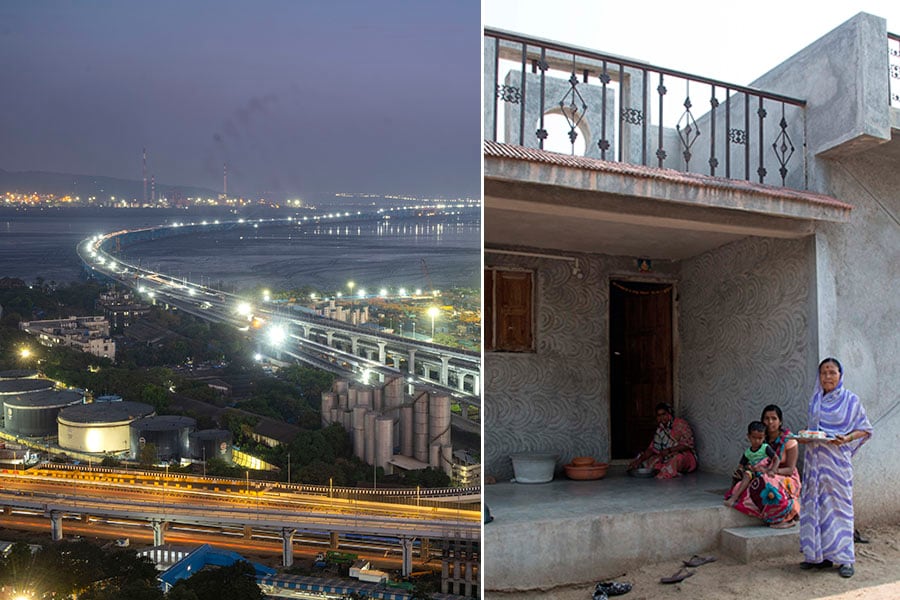
Interim Budget 2024: Reimagining, one more time
The finance minister's speech was a vision statement for all-round long-term development, but did it adequately capture current realities?
 (from left) A view of the Mumbai Trans Harbour Link in Mumbai, India; A new house at Vari village, Maharashtra. Images: Shutterstock and Satish Bate/HT via Getty Images
(from left) A view of the Mumbai Trans Harbour Link in Mumbai, India; A new house at Vari village, Maharashtra. Images: Shutterstock and Satish Bate/HT via Getty Images
Rewind to Interim Budgets of the past—and I’ve seen a few—and one of the most common phrases you’d encounter in coverage is ‘non-event’.
A peep into my mailbox post-lunch on February 1 suggests that such expressions mean less these days. A bevy of eager CEOs and founders, perhaps gently cajoled by their public relations minders, felt the need to wax as eloquently as possible on what could only be a humdrum occasion. In a similar vein, hacks like yours truly too consider the day incomplete without attempts to sound off on the 5,270-odd words speech by Finance Minister (FM) Nirmala Sitharaman. (The day won’t be quite over without partaking of the customary office Budget lunchbox, as well.)
That’s not to say the quotes wafting in aren’t to the point. This one that just hit the top of the mailbox, for instance, sums up the FM’s and the government’s vision—as well as what at least 25 others have said before him post 1 pm: “We commend the Interim Budget for its focus on unlocking India's growth potential and building a sustainable future. The 2024 Interim Budget unfolds a visionary roadmap for 'Viksit Bharat', with INR 11,11,111 crore, infrastructure allocation, constituting 3.4 percent of the GDP, is a game changer for sectors such as metals, logistics, and green energy. Initiatives like railway corridors, metro expansion, Vande Bharat trains, and new airports will bolster efficiency and create jobs.” That’s by Arun Misra, CEO, Hindustan Zinc Ltd.
As a colleague put it, when the Forbes India team was discussing Budget coverage, social media is adequate to weigh in on much of what the FM proposed and held forth on (not for too long, just 58 minutes). If you’re looking for a little more, don’t miss the Forbes India team’s comprehensive analysis, from the FM’s fiscal prudence to the record government capex proposal to those directed at empowering rural women.
So what do traditional armchair columnists do in such circumstances?








